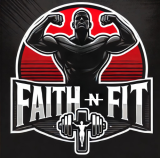Getting a chronic pain diagnosis is like stepping into a world you never asked to visit—where days stretch long, sleep doesn’t come easy, and you suddenly need to explain your body to people who don’t live in it. You won’t find a lot of guidebooks in waiting rooms or glossy pamphlets that map out how to live with this new version of yourself. It’s overwhelming, and sometimes, it’s terrifying. But here’s the quiet truth: life doesn’t stop because pain showed up, and with time, support, and strategy, you can begin to carve out a way of living that makes room for both joy and discomfort.
Redefine What “Normal” Means to You
You’re not who you were before this diagnosis, and that might feel like a loss. That’s okay—grieve that version of yourself if you need to. But after the grieving, comes the rebuilding, and it starts with letting go of what you used to expect from your body. “Normal” becomes fluid now. It might mean fewer social plans or slower mornings, but it also might mean deeper friendships, intentional rest, and listening to your needs with more compassion than ever before.
Start Small With Pain Management Experiments
No single method works for everyone, and that’s both frustrating and freeing. You might start with physical therapy, or acupuncture, or heated blankets and gentle yoga. Some find that tracking pain triggers in a notebook helps spot patterns, while others lean on prescribed medication or alternative therapies like TENS units. The goal isn’t to erase all discomfort, but to learn what softens the edges. Try, adjust, keep the things that help—even a little—and toss the rest.
A Modern Approach to Easing Chronic Pain
When traditional methods fall short, exploring new tools for pain relief can offer a sense of agency in an otherwise frustrating process. For many, utilizing a shockwave therapy machine has become a promising option, as it promotes healing and pain relief by delivering shockwaves into a patient’s soft tissue through their skin. Sessions are short—usually under 15 minutes—and it’s not uncommon for people to feel a difference after just one treatment. It’s not a magic cure, but it’s a step toward regaining comfort without invasive procedures or heavy medication.
Moving with Intention, Not Perfection
Exercise can feel like a loaded word when you’re in pain, but it doesn’t have to mean punishing workouts or pushing through agony. The key is to move in ways that support your body rather than challenge it into submission—gentle stretching, short walks, swimming, or even slow dancing in your kitchen all count. Consistent movement helps maintain mobility, reduce stiffness, and release endorphins that ease both physical and emotional weight. The goal isn’t to train like an athlete—it’s to reconnect with your body on your own terms.
Redraw the Boundaries in Your Relationships
Pain has a way of making some relationships feel heavier, especially when the people you love don’t understand what you’re going through. It might mean you need to set clearer boundaries—asking others not to comment on your appearance, or reminding them that “you don’t look sick” isn’t a compliment. Real friends will rise to the occasion, even if they stumble a little at first. And when someone shows you they can’t—or won’t—meet you where you are, it’s okay to let some distance settle in.
Feed Your Mental Health Without Apology
Chronic pain and depression are frequent companions, and there’s nothing shameful about that. Therapy, support groups, journaling, medication, even just calling someone who listens—these things matter. Don’t wait until the emotional toll hits rock bottom before you reach out. You’re not weak for needing help. You’re human. And sometimes, just being honest about how hard it is can lighten the load by a few degrees.
Make Room for Joy in the Middle of the Pain
This might feel impossible some days. But joy doesn’t have to be loud or wild. It can be a good cup of tea, a text from a friend, the first sunny day after a string of grey ones. Chronic pain may demand a lot from you, but it doesn’t get to take everything. Look for those small, golden things that pain hasn’t touched. That’s your resistance. That’s how you remind yourself that you’re still here—and still living.
You don’t have to do this perfectly. In fact, you won’t. Some days you’ll overdo it, or underdo it, or wish you could be anyone but yourself. But you’re learning. You’re adapting. And you’re figuring out how to live a full, messy, meaningful life—one breath, one ache, one day at a time.
Embark on your fitness journey with Faith~N~Fit, where faith meets fitness through expert advice, personalized calculators, and transformative workouts. Start today!
Read Next…
- Types of Attire You Can Wear During a Workout
- How I Turned a 3-Day Fast Into a 7-Day Fast
- How to Stay Stylish and Comfortable During Your Workout Routine: A Focus on Crop Tops
- AI for Health: How Artificial Intelligence Is Transforming Medicine and Personal Wellness
- 12 Major Anti-Aging Pathways That Support Longevity and Youthful Vitality
Subscribe now and get a 14-day free trial workout app for iPhone users.



